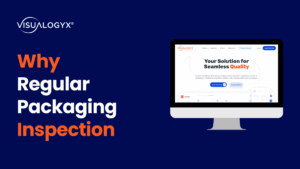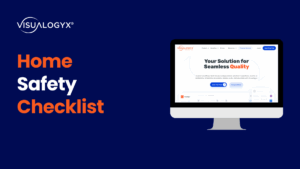In 2024, the demand for well-maintained commercial buildings is more critical than ever. Businesses not only depend on their properties for operational success but also for ensuring the safety and comfort of their employees and customers. According to the U.S. Department of Labor, workplace injuries cost businesses over $170 billion annually, with many of these incidents linked to poorly maintained facilities. Commercial properties that lack proper inspections risk more than just safety violations—they face potential loss in property value, diminished functionality, and even legal liabilities.
What Is A Commercial Building Inspection Checklist?
A comprehensive commercial building inspection checklist serves as a valuable tool for ensuring that properties remain safe, efficient, and in good condition. These checklists help property owners and managers identify issues before they escalate into costly repairs or safety hazards. By conducting periodic inspections, businesses can maintain compliance with local regulations, ensure the longevity of their properties, and prevent unexpected interruptions to operations.
As we delve into the essentials of the commercial building inspection checklist, we’ll explore why these inspections are crucial and how they can safeguard your property and investments well into the future.
Why Commercial Building Inspections Are Crucial?
Commercial building inspections serve as a vital safeguard for property owners and managers, helping ensure the safety, longevity, and regulatory compliance of their buildings. These inspections are designed to identify structural issues, assess the condition of critical systems such as electrical and plumbing, and check for any safety hazards that could pose risks to occupants. Regular inspections not only help businesses maintain safe environments for employees and visitors but also play a critical role in protecting their investments.
In the realm of real estate inspection, proactive maintenance is key to avoiding costly repairs down the line. By identifying potential problems early, property owners can address them before they escalate into major, expensive fixes. For instance, an unnoticed roof leak or electrical fault could lead to significant damage and operational disruptions if left unresolved. Inspections are thus an essential tool for preserving the value of the property, ensuring it remains in peak condition for both occupancy and potential resale.
With advancements in technology, the inspection process has also become more streamlined and effective. Tools like commercial Building Inspection Software allow for more thorough assessments, while virtual Inspection standards offer flexibility in conducting inspections remotely. This blend of traditional methods and digital innovations ensures that inspections are not only efficient but also comprehensive, helping businesses adhere to safety regulations while minimizing downtime.
As we move forward, it’s essential to understand the exact steps involved in the inspection process and how businesses can effectively implement these tools to safeguard their properties.
Overview of the Commercial Building Inspection Process
The building inspection process is a structured approach designed to thoroughly assess the condition of a commercial property, ensuring that it meets safety standards, is in compliance with regulations, and remains operationally efficient. This process can be broken down into three main phases: preparation, inspection, and reporting.
- Preparation: Before an inspection begins, the property owner or manager needs to prepare by gathering relevant documents such as previous inspection reports, building plans, and maintenance records. This information helps inspectors understand the history of the building and identify any areas that may require closer attention. Scheduling the inspection at a convenient time, notifying occupants, and ensuring that all areas of the building are accessible are also important preparatory steps.
- Inspection: During the commercial inspection, the inspector will evaluate various components of the building, including the structure, electrical systems, plumbing, HVAC, fire safety systems, and exterior conditions like roofing and windows. The goal is to identify any issues that could affect safety, functionality, or compliance with local codes. Inspections typically involve both visual assessments and the use of specialized equipment to detect hidden problems, such as moisture behind walls or electrical malfunctions.
- Reporting: Once the inspection is complete, the inspector compiles a detailed report outlining their findings. This report highlights any immediate concerns that need to be addressed, such as safety hazards, as well as long-term maintenance recommendations. The report also helps prioritize repairs and improvements, allowing property owners to plan and budget effectively.
The use of Commercial Building Inspection Software has revolutionized this process. By digitizing inspections, these platforms allow for quicker data collection, more accurate documentation, and the generation of detailed reports in real time. Inspectors can upload photos, make notes, and track issues directly through the software, improving both the speed and quality of inspections. This also facilitates better record-keeping, ensuring that businesses can easily access past reports and track the progress of repairs over time.
With the process now clear, the next step is to explore what a comprehensive commercial building inspection checklist should include and how businesses can use it to maintain the highest standards of safety and efficiency.
A Complete Commercial Building Inspection Checklist for 2024
To ensure that your commercial property is safe, functional, and compliant with regulations, having a comprehensive commercial building inspection checklist is essential. This checklist covers all the critical areas that need to be evaluated during a property inspection, ensuring that no crucial elements are overlooked. Below is a detailed breakdown of the components included in a thorough inspection.
1. Structural Inspection
- Foundation: Check for cracks, shifting, or settling in the building’s foundation.
- Walls and Columns: Inspect for signs of wear, cracks, or water damage that could compromise the structure’s integrity.
- Floors and Ceilings: Look for uneven flooring, sagging ceilings, or other indications of structural weakness.
2. Electrical Systems
- Wiring: Ensure that all wiring is up to code and inspect for any exposed wires or overheating panels.
- Lighting: Test all indoor and outdoor lighting fixtures for proper functionality.
- Emergency Systems: Confirm that exit signs, emergency lighting, and backup power sources are operational and compliant with safety standards.
3. Plumbing
- Pipes and Valves: Check for leaks, corrosion, or blockages in water supply and drainage systems.
- Water Pressure: Test water pressure throughout the building to ensure it meets regulatory standards.
- Water Heaters: Inspect water heaters for signs of aging, leaks, or potential safety hazards.
4. HVAC (Heating, Ventilation, and Air Conditioning)
- System Efficiency: Inspect heating and cooling systems for proper functionality and energy efficiency.
- Filters and Vents: Ensure that air filters are clean and vents are unobstructed to promote good air quality.
- Thermostats: Test thermostats to verify that they are working correctly and maintaining comfortable indoor temperatures.
5. Fire Safety Check
- Smoke Detectors: Confirm that all smoke detectors are functioning and meet fire safety regulations.
- Sprinkler Systems: Inspect sprinkler systems for proper coverage and check for any signs of leaks or blockages.
- Fire Extinguishers: Verify that fire extinguishers are fully charged and accessible throughout the building.
6. Roofing and Exterior
- Roofing Materials: Check for missing or damaged shingles, leaks, and wear in the roofing materials.
- Drainage Systems: Ensure gutters and downspouts are clear of debris and directing water away from the building’s foundation.
- Exterior Walls: Inspect for cracks, deterioration, or water damage on the building’s exterior surfaces.
7. Accessibility (ADA Compliance)
- Entrances and Exits: Verify that all entryways, exits, and pathways are accessible to individuals with disabilities.
- Signage: Ensure that all signage complies with the Americans with Disabilities Act (ADA) standards.
- Restrooms: Confirm that restroom facilities are accessible and meet ADA regulations.
This commercial building inspection checklist not only ensures that your property is inspected from top to bottom but also helps to maintain compliance with safety regulations and ADA requirements. A thorough property inspection like this one identifies potential issues before they turn into costly repairs or liabilities.
As we continue, it’s important to understand how this checklist can be adapted for different types of commercial properties and how businesses can further protect their investments through regular inspections.
Commercial Property Inspection Checklist
A commercial property inspection checklist is distinct from a residential inspection checklist in several key areas. While both types of inspections focus on ensuring safety and functionality, commercial properties often have more complex systems and infrastructure compared to residential buildings. The scale and purpose of commercial spaces also vary greatly, which adds an extra layer of scrutiny during inspections.
- Complexity of Systems: Commercial properties typically house larger electrical, plumbing, and HVAC systems to accommodate multiple tenants or large-scale operations. These systems require detailed assessments due to their size and usage levels. In contrast, residential inspections tend to focus on smaller systems designed for single-family occupancy.
- Usage of Space: Commercial spaces serve diverse purposes—offices, warehouses, retail spaces, and industrial facilities—all of which have unique inspection needs. For instance, an office building inspection checklist will prioritize elements like elevator safety, fire alarm systems, and ADA compliance in communal areas. On the other hand, a warehouse inspection might focus more on structural integrity, storage systems, and the safety of loading docks.
- Regulatory Compliance: Commercial properties are subject to more stringent regulations compared to residential properties, particularly in areas like fire safety, health codes, and accessibility standards. Regular inspections help ensure that businesses comply with these regulations to avoid fines or operational disruptions.
Here are some specific considerations for different commercial properties:- Offices: In addition to the standard checklist items, offices require careful examination of communal areas such as conference rooms, restrooms, and parking lots. The commercial property inspection checklist for office buildings often emphasizes emergency systems like fire alarms and exit routes to ensure occupant safety.
- Warehouses: Warehouses demand special attention to structural elements, storage systems, and machinery. Inspectors will evaluate the building’s ability to support heavy loads, check the stability of racking systems, and review safety measures for any equipment in use.
- Retail Spaces: Retail properties need inspections that focus on storefronts, customer areas, and emergency exits. Accessibility, including proper ramps, entrances, and signage, is also critical for meeting ADA compliance standards.
The flexibility of a commercial inspection for rental property further highlights the need for customized checklists that align with the specific requirements of each commercial space. This ensures that no matter the type of property, the inspection is thorough and tailored to its operational demands.
As we move forward, it’s essential to address the frequency of these inspections and why regularly scheduled assessments are key to maintaining commercial properties in top condition.
Frequency of Inspections
Regularly scheduled inspections are critical for ensuring the safety, functionality, and longevity of commercial properties. An annual commercial building inspection checklist provides a structured approach to identifying potential issues before they become costly problems. By conducting yearly inspections, property owners and managers can stay ahead of wear and tear, regulatory changes, and evolving safety standards.
Annual inspections are essential for maintaining compliance with local building codes, fire safety regulations, and accessibility standards. They also serve as a vital tool for proactive building maintenance, helping to prevent unexpected breakdowns or failures that could disrupt business operations. These yearly assessments provide an opportunity to evaluate all major systems—such as electrical, HVAC, plumbing, and structural elements—ensuring that they continue to perform efficiently and safely.
In addition to safety, regular inspections help protect the financial investment in a commercial property. Catching small issues early on through an annual commercial building inspection checklist allows property owners to make timely repairs, preserving the value of their assets and reducing the likelihood of more significant expenses in the future.
As we move to the next section, it’s time to explore the importance of proper documentation and how using digital tools can make inspections more efficient and effective in today’s fast-paced commercial real estate landscape.
Free and Ready-to-Use Commercial Building Inspection Checklist
To help businesses streamline their inspection processes, we offer a free commercial building inspection checklist that can be easily accessed and utilized. This resource is available as a downloadable commercial building inspection checklist PDF, providing a convenient way for property owners and managers to conduct thorough inspections without missing any crucial details.
For businesses looking for a more customizable solution, a commercial building inspection checklist template is also available. This template allows users to tailor the checklist to fit the unique needs of their specific properties, whether it’s an office building, warehouse, or retail space. By offering flexibility and ease of use, this template ensures that businesses can maintain their buildings effectively while saving time and effort.
To further enhance the inspection process, these downloadable resources are designed to be comprehensive, covering all the necessary components of a commercial building inspection. With just a few clicks, property managers can access, print, or share these checklists, making it easier to stay on top of regular maintenance and compliance requirements.
As we proceed, it’s important to address the final steps in the inspection process: using the gathered data to make informed decisions about repairs and improvements that will protect your commercial property for years to come.
Common Issues Found During Inspections
Commercial property inspections often uncover a range of common issues that, if left unaddressed, can lead to safety risks, costly repairs, and even regulatory violations. Among the most frequent findings are electrical hazards, such as outdated wiring, overloaded circuits, and faulty outlets. These issues pose serious fire risks and need immediate attention to ensure the safety of the building’s occupants.
Plumbing issues are another common discovery during inspections. Leaking pipes, poor water pressure, and corroded fixtures can cause water damage and lead to increased utility costs if not promptly repaired. Regular inspections help identify these problems early on, preventing more significant damage down the line.
Structural wear and tear is also a recurring issue, particularly in older buildings. Cracks in the foundation, uneven floors, and sagging ceilings can indicate more severe underlying problems that could compromise the integrity of the building. Identifying these signs during a property inspection allows for timely maintenance to preserve the structure’s stability and safety.
A key focus during any commercial building inspection is the fire safety check. Ensuring that smoke detectors, sprinkler systems, fire extinguishers, and emergency exits are all fully functional is critical to meeting safety regulations and protecting lives. Inspectors will also verify that fire alarms and evacuation plans are properly in place, helping businesses maintain compliance with fire safety codes.
As we approach the conclusion, we will explore how businesses can take proactive steps to address these common issues and ensure that their commercial properties remain safe, compliant, and operational for the long term.
Conclusion
In summary, a thorough commercial building inspection is essential for maintaining the safety, functionality, and value of your property. Regular inspections help identify potential issues early, ensuring that problems are addressed before they escalate into costly repairs or compliance violations. By adhering to a comprehensive commercial building inspection checklist, businesses can safeguard their investments and ensure that their facilities meet all necessary safety and regulatory standards.
To streamline your inspection process and enhance your property management practices, we encourage you to utilize the available resources. Download the commercial building inspection checklist PDF to get started with a detailed and easy-to-use guide for your inspections. For a more advanced approach, consider using commercial Building Inspection Software, which can help you manage inspections more efficiently, track issues, and maintain comprehensive records.
By integrating these tools and practices, you’ll not only stay ahead of potential issues but also ensure that your commercial property remains in optimal condition. Taking these proactive steps will help protect your investment and provide a safe, functional environment for all occupants.




